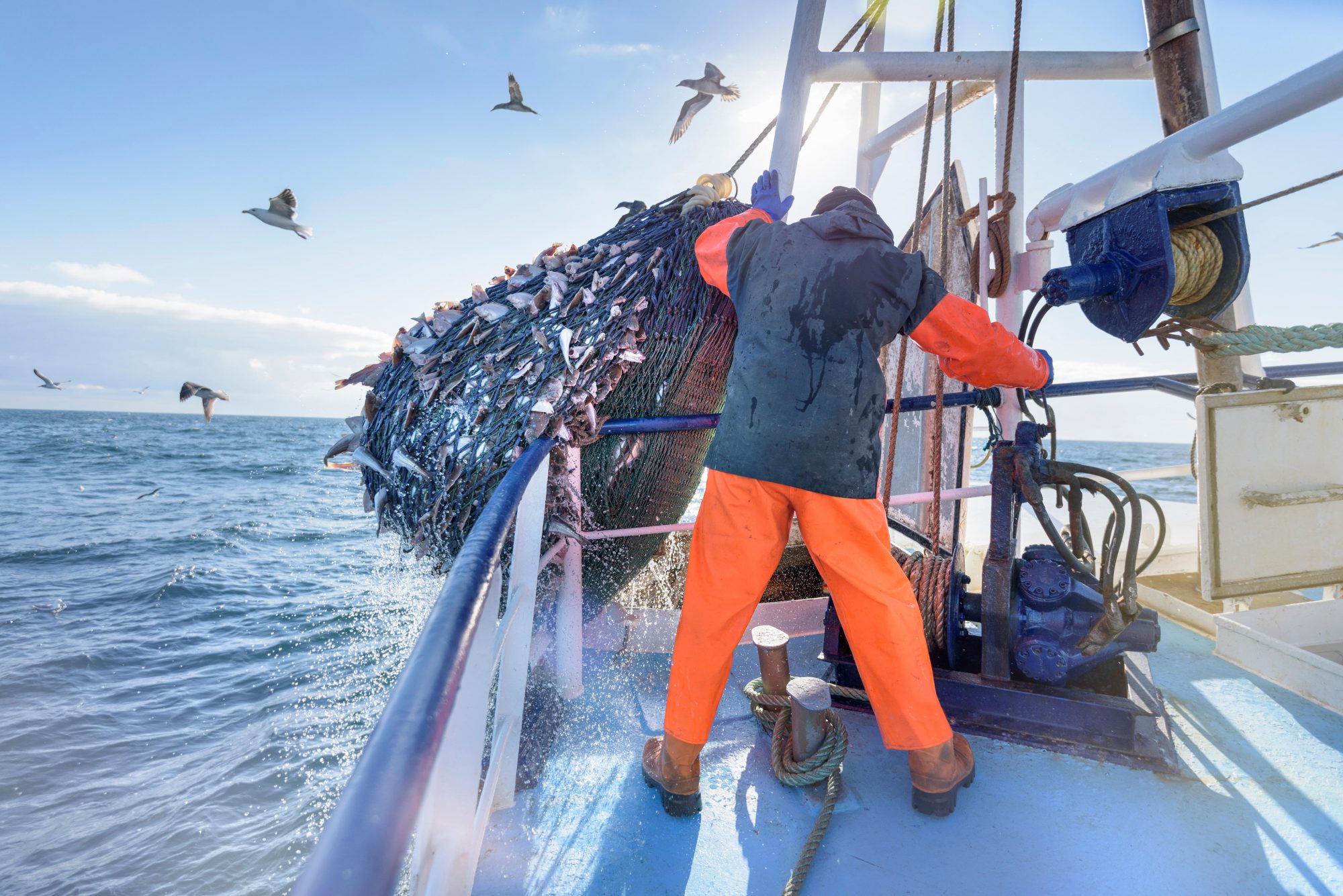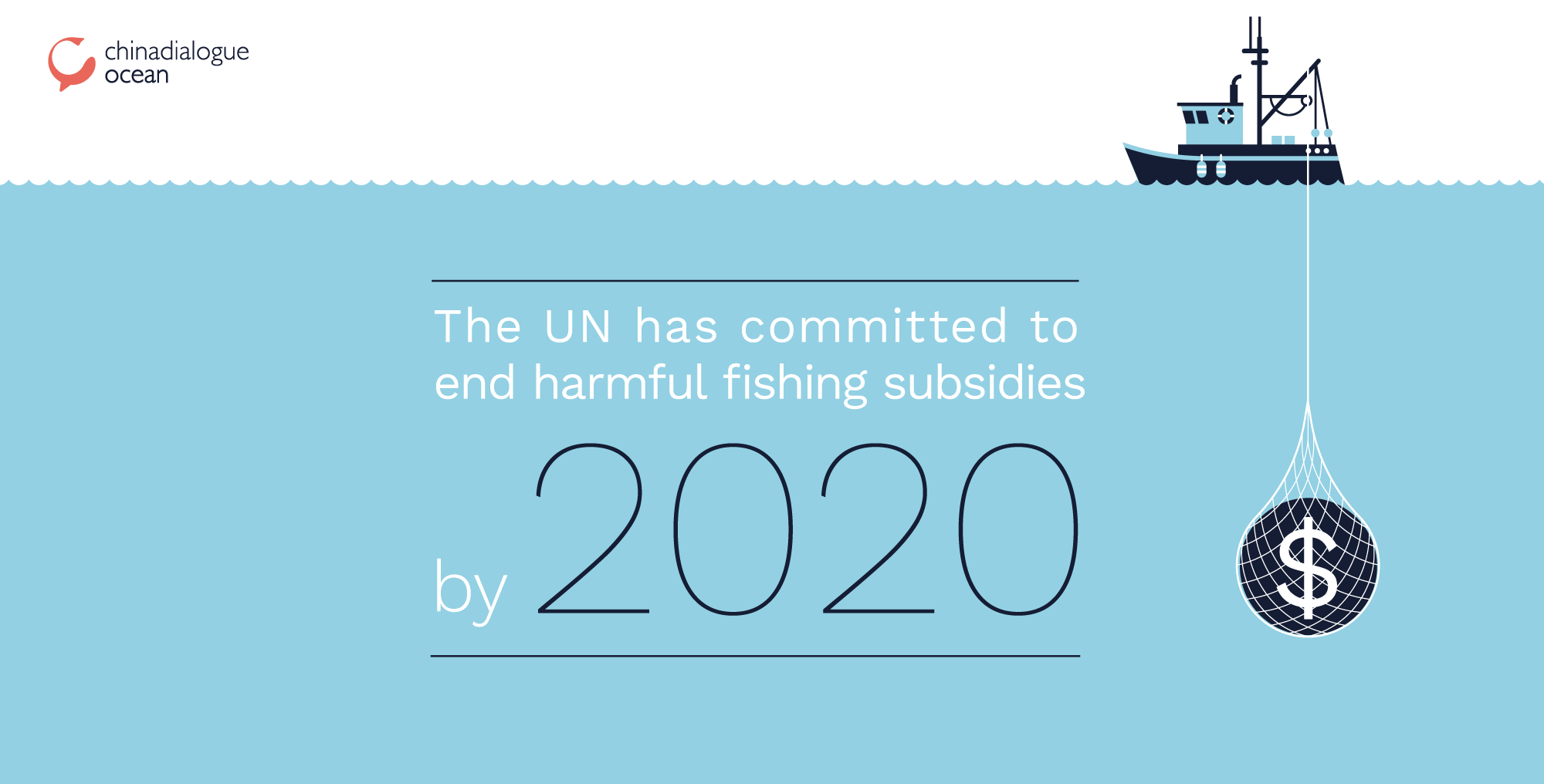Billions of dollars of damaging subsidies continue to be poured into fishing every year, despite governments agreeing long-standing goals to eliminate them. The money makes fuel cheaper and increases capacity so boats catch more fish. Analysts say the subsidies make fishing seem more profitable than it really is and are driving a global decline in fish populations.
In the most up-to-date and comprehensive survey of fishing subsidies produced to date, an international team of scientists found that $35 billion of public money went into fishery subsidies in 2018. It classified $22 billion of that as harmful because it went towards increasing catch capacity.
Published in the journal Marine Policy last month, the analysis found that fuel subsidies represent nearly a quarter (22%) of all financial support provided to fishing fleets.
Fuel subsidies are widely considered among the most harmful because they make it affordable for more vessels to spend the time at sea necessary to chase down dwindling fish populations.
The survey comes as negotiators at the World Trade Organisation (WTO) race against a self-imposed deadline to agree a way to scrap all harmful subsidies by the end of this year, against a backdrop of a global ocean still being drained of fish. More than 90% of fish stocks are at maximum sustainable levels or overfished, according to the UN Food and Agriculture Organisation.
The survey suggests that won’t improve any time soon. “I was disappointed,” says Prof Rashid Sumaila, a fisheries policy expert at the University of British Columbia, Canada, who led the new analysis. “There was a decline in subsidies overall, but it’s in the wrong place.”
Not all of the $35 billion public support for the fishing industry is harmful, he says. Some of the cash – known as beneficial subsidies – pays for efforts to promote conservation and sustainable fishery management. At the other end of the scale are the damaging payments: fuel subsidies such as tax exemptions.
Then there are what Sumaila’s research identifies as ambiguous subsidies, which could in theory either help prevent or encourage overfishing, depending on the circumstances. Take for example a project launched in Bangladesh to support the livelihoods of fishers and other vulnerable people at difficult times. Implemented without care, such social safety net programmes could merely attract more people to fish the same waters.
The Marine Policy analysis shows that, where nations have made cuts to subsidies, the reductions have been mainly to this ambiguous category. So, compared with a similar survey carried out a decade ago, Sumaila says that damaging subsidies now represent a greater proportion of the whole. (Overall subsidies in 2009 were measured at $41 billion but Sumaila says that, while that might suggest an overall reduction, it’s not a fair comparison as the data was gathered in a different way.)
The results showed that Asia offers the largest subsidies to its fleets. The continent contributed 55% of the global total, followed by Europe (18%) and North America (13%). China was the largest single contributor, making 21% of the global subsidy payments, followed by the USA (10%) and Korea (9%). Those numbers represent quite different approaches and impacts, Sumaila says. Subsidies from China and Korea are mostly classified as damaging, while those from the US government tend to be beneficial.
“China is so big that if it doesn’t fix issues related to its fishing then we’re in trouble,” he says.
China has by far the world’s biggest fishing fleet, with more than 270,000 vessels, and an annual catch of 18 million tonnes, according to a separate analysis of fishing subsidies published earlier this year by the International Institute for Environment and Development.
This dwarfs the 5 million tonnes landed by Europe, 4 million by Russia and 4 million by the US. China says it will cut fuel subsidies by 40%, and also plans to reduce the size of its overseas fleet.
Isabel Jarrett, who heads a campaign to end damaging fishing subsidies run by the Pew Charitable Trusts, which funded the new analysis, says China draws much of the criticism because of its size. “But it’s not the only one. We need political leadership. If leaders and ministers from governments around the world are serious about fulfilling their international obligations, they need to publicly make clear that commitment to ending harmful fishery subsidies. And similarly, they need to ensure they give that message to their officials.”
The WTO first formally recognised the need to reform fishing subsidies back in 2001. Negotiations increased after the UN introduced a set of Sustainable Development Goals (SDGs) in 2015. Among them, SDG 14.6 calls for the prohibition by 2020 of subsidies that contribute to overfishing and illegal, unreported and unregulated fishing. In 2017, the WTO converted that to a pledge to reach an agreement on how to do this by the end of 2019. Such a WTO action would be legally binding, but progress has been slow.
Negotiators are meeting again at the WTO Geneva headquarters this month to resume talks. Speaking at the previous round of talks in Geneva in October, WTO head Roberto Azevedo said: “If we do not meet this deadline, our marine resources will not wait, they will continue to decline and this should be of pressing concern to all of us.”
Sumaila, who was at the October talks, says he left them more optimistic about the chances of a deal. “There is so much pressure on the negotiators. They need a deal and I think it will be substantial,” he says. “But I think it will be early next year when they actually come to a decision.”
Jarrett agrees: “We have a political mandate. What needs to happen now is action.”
The campaign to cement that action into a workable agreement has the backing of David Attenborough, the veteran naturalist and broadcaster. In a video shown at the October meeting, he said: “We can turn this around right now… It is time to put an end to subsidies that harm our oceans.”



